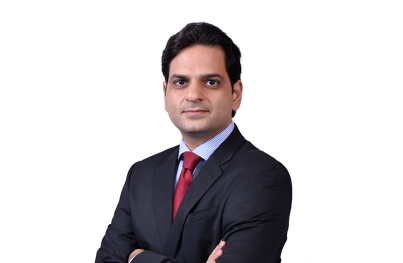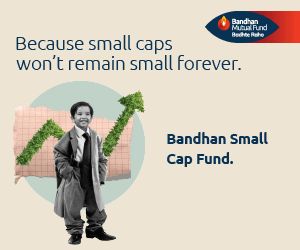ACE framework stands for High Active Share High Conviction and Equi weighted Portfolio
BFSI Industry Interview

Mr. Akhil Chaturvedi, Director & Chief Business Officer, Motilal Oswal AMC. He currently heads the Sales, Product & Business Development of Motilal Oswal AMC for the last 9 years. He has been instrumental in setting up a sales business and growing it to heights. He has 22 years of rich experience in sales, distribution, client advisory, products and business development from companies such as Birla Sun Life Asset Management Ltd., Birla Global Finance Ltd., and Daiwa Asset Management Pvt. Ltd.
His last assignment was with Daiwa Asset Management Pvt. Ltd. as Head – Retail Sales, where he was responsible for setting up Sales & Distribution functions and being actively involved in product development and launch strategies for mutual fund schemes. Chaturvedi holds MBA in Marketing and MA in finance from the University of Leeds, UK. He is also a Certified Financial Planner.
In his conversation with AdvisorKhoj, Chaturvedi shares his thoughts and observations on the AMC vision, the changes in investor behaviour, midcap fund and many other topics.
You recently launched a very successful Small Cap fund with a collection of INR 1226 Crs. Now with the launch of your Large Cap fund, this fund is comparatively on the other side of the equity market risk spectrum, could you share the fund house thought process behind this launch?
There are 3 important points to answer this question:
MOAMC’s basket of offerings:
We have a variety of products as a part of our active MF offerings. We never had a core large-cap-oriented product. Our focused fund which was initially large-cap positioned has also been changed to a multi-cap offering. This was one of the reasons why we wanted our investors to have a large-cap-focused product from MOAMC.
Attractive Large Cap opportunity:
As per the current market expectations, we feel that the growth opportunity in the large-cap space is still very high. Our large-cap companies are still not the biggest in the world. Hence, there are many opportunities left to be explored at a global level. This expansion of the top 100 companies. Even in terms of valuations compared to the historical average, large caps still have a higher expectation of growth in price.
Capital Preservation:
Large-cap companies are considered more stable and would serve best for risk-averse investors. These companies help in preserving wealth and still generate some alpha compared to the normal income. Also, when compared to small-cap companies, the volatility in performance is less for these highly stable companies.
Could you elaborate on the ACE framework for your Large-cap fund?
"ACE" framework stands for High Active Share, High Conviction & Equi-weighted Portfolio
It is the differentiating factor of MO's large-cap fund compared to other funds.
Active Share: We would like to build a portfolio with a high active share of ~60-80% compared to Nifty 100 which would be focused on companies with higher earnings expectations from the Nifty 100
Conviction: We would concentrate on a portfolio with ~30 stocks compared to an industry average of 58 which proves higher conviction on individual stocks compared to the peer group
Equi-weight: We would focus on an equi-weighted portfolio. The idea is to identify stocks where the future expected earnings are higher/better than the index irrespective of the market capitalization and equally allocate towards each of them. Given an equal-weighted portfolio construct, there is another layer of risk management added which leads to avoiding risks associated with allocation.
Your Large Cap fund will be the first of its kind to hold 30 stocks portfolio, could you share your thoughts on this?
We would like to build a high conviction portfolio and avoid a long tail mirroring the benchmark. This aligns with our philosophy of identifying stocks focused on high growth thus leading to higher alpha. Building a portfolio with more than 50 stocks wouldn’t help in generating alpha since the contribution of each stock would be significantly less. With a 30-stock equi-weighted portfolio, we shall allocate ~3% in each security whose contribution would be impactful on the fund performance.
In the broader picture of market capitalization specific to India & with the current large-cap companies' PAT to market capitalization ratio, do large-cap companies still have an upside to PAT/Market Cap?
Large-cap companies are well-positioned to benefit from broader economic growth since they contribute majorly to the economy. They gain from increased consumer demand and business opportunities as India rises on its growth trajectory. Large-cap companies have a higher resilience, especially during challenging economic conditions. This resilience can contribute to sustained profitability, enhancing the PAT to market cap ratio over time. They have the resources to invest in R&D and innovation. This enhances their ability to adapt to changing market trends and embrace technological advancements to position themselves favourably for continued profit growth. Also, compared to the profitability of Global Large caps, the profitability can still be improved by increasing the reach of our large caps on a global scale. All of these factors can add up to increase the PAT to market cap growth of Indian large caps even after current levels.
Globally, just 3 Indian companies are on the list of top 100 companies by market cap, do you believe more Indian large-cap companies will make it to this list & why?
The top companies in India still have the potential to become global in their respective markets. Also, their domestic market has still not reached its saturation which provides a huge opportunity for growth. The performance of specific sectors in which the top Indian companies operate is important to understand. For instance, sectors like technology, pharmaceuticals, and financial services have shown promise in recent years. If these sectors continue to grow, it could positively impact the market capitalization of companies within them. Such continuous efforts by Indian companies, supportive government policies, and favourable economic conditions can contribute to the presence of more Indian companies in the top 100 by market capitalization
What percent of an investor’s portfolio would you ideally suggest for a Large Cap fund allocation at all times, considering that the market cap winner rotates each year?
This is very difficult to answer. The financial advisor of a particular investor would be the right person to suggest the allocation percentage. However, for a general suggestion, a risk-averse investor seeking more stability over volatility can allocate more toward a large-cap fund. Also, a new investor in equity markets may consider having a higher allocation towards such funds. Apart from this, most investors can allocate around 20% of their investments to large-cap market cap companies. Also, we have seen that even though the market winners rotate every year, large caps have been consistent in their performance. This should make investors keep a certain amount in large caps for the long term.
Investors & Distribution Partners do receive a high conviction if there is skin in the game. Could you provide some insights to our readers as your fund house believes in buying in, to what is being offered to the market as well?
Skin in the game is to have personal interest vested in the success of something. MOAMC has made proprietary investments exceeding 5,800 crores across its products demonstrating strong conviction in our funds. This commitment is mirrored by the promoters' dedication to invest around 150 Cr. during the large-cap NFO. The promoters shall also invest in the large-cap offering. Also, the fund manager shall have all his investments in the funds managed by him highlighting high manager Skin in the Game as well.
Think Equity. Think Motilal Oswal. Our readers would like to know about the Group's philosophy on this?
Motilal Oswal is a comprehensive financial services group offering a wide array of investment products and services. Whether an individual is interested in mutual funds, real estate, portfolio management, or equity-related services like broking and demat accounts, Motilal Oswal aims to be a one-stop solution for various financial needs. The brand slogan reinforces the group's commitment to being a key player in the equity space. The slogan “Think Equity. Think Motilal Oswal”, is a concise way of communicating that Motilal Oswal is synonymous with equity-related products and services. It emphasizes the group's specialization and expertise in the equity space, encouraging investors and clients to associate Motilal Oswal with their equity-related needs.
Your fund house has achieved good growth in its actively managed equity funds AUM in the recent past 2 years, what changed?
While we have stuck with our QGLP philosophy of investing over the years, there were a few additional positive changes that have occurred in the last couple of years. We have brought in a risk management framework to improve the performance at a lower volatility. We have also brought in a fund house-wide themes list which focuses on sectors with higher future growth expectations. With significant freedom given to the fund manager, most of our portfolios and their holdings are based on these themes. All of the above factors in addition to the on-boarding of our Executive Director, Mr. Prateek Agrawal, have been the pillars of support for the comeback in performance.
In an investment management business, the quality of the Investment team is very important. Could you provide some insights about your Investment team?
The consistency in performance for the investor is one of the important metrics to value the quality of the business. This performance is based on the fund management and investment team. We are happy to share that we have an investment team of nearly 25 members. We have around 10 analysts who are experts in particular sectors and share their views on companies that are expected to perform better in the future with the fund managers. There are around 10 fund managers across MF and alternate segments on the active side. These fund managers are highly qualified and have great industry knowledge which they have gained over the years. There is also a risk management team to monitor the downside of each portfolio and security. They help in lowering the volatility in the performance of the portfolio.
This team is overviewed by an investment committee that consists of 3 industry stalwarts: Mr. Raamdeo Agrawal, Mr. Navin Agarwal, and Mr. Prateek Agarwal. They bring in their expertise with frequent discussions with the FMs and investment team to spot better companies in the portfolios.
Through this interview, what message would you like to give to investors & distribution partners?
We understand that distributors and advisors know that the cycle of growth and value will always continue and therefore they should be looking to have their set of preferred fund houses for both styles. MOAMC is trying to position itself as the distributor’s first choice for growth-oriented allocations in their client portfolios.
With India progressing well on its growth journey, we see good prospects for growth-style investing and remain confident of our fund house’s ability to harness this growth potential in the fund portfolios.
Our message to distributors, especially those that continue to sit on the fence regarding allocations to MOAMC is that every fund house has its cycle when its style outperforms and then eventually underperforms when the tide changes. MOAMC’s outperformance cycle has just started. We urge you to take the benefit of this cycle to deliver alpha for your clients. Jumping late into the cycle might not benefit the distributors who would keep waiting.
Mutual Fund Investments are subject to market risk, read all scheme related documents carefully
Recent Interviews
-
In conversation with Mr Manish Gunwani Head Equities with Bandhan Mutual Fund
Apr 17, 2024
-
In conversation with Mr Aniruddha Naha CIO Alternatives of PGIM India Asset Management Pvt Ltd
Apr 15, 2024
-
In conversation with Mr D P Singh Deputy Managing Director and Joint Chief Executive Officer of SBI Mutual Fund
Mar 25, 2024
-
In conversation with Mr Anunaya Kumar President and Head of Sales and Distribution at 360 ONE Asset
Mar 21, 2024
-
In Conversation with Mr Gautam Kaul of Bandhan Mutual Fund: Senior Fund Manager Fixed Income
Mar 13, 2024
Fund News
-
HDFC Mutual Fund launches HDFC Manufacturing Fund
Apr 26, 2024 by Advisorkhoj Team
-
Edelweiss Mutual Fund launches Edelweiss Nifty Alpha Low Volatility 30 Index Fund
Apr 26, 2024 by Advisorkhoj Team
-
Kotak Mutual Fund launches Kotak FMP Series 330
Apr 25, 2024 by Advisorkhoj Team
-
Groww receives SEBI approval to launch Indias first Nifty Non-Cyclical Consumer Index Fund
Apr 24, 2024 by Groww Mutual Fund
-
Leveraging the PSU rally to sustain capex growth
Apr 10, 2024 by Axis Mutual Fund




